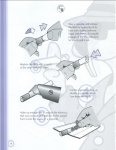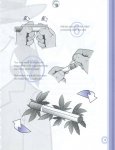Ahh, ok, well I kind of randomly found this on a thread at overgrow. It says up to 30% of the cannabinoids can be removed by a cigarette filter. That number seems awfully high. I know that I wasn't only 70% as high and I wasn't smoking more bud than I would normally.
******************
"Franjo Grotenhermen
The major strategies to reduce the risks of smoking are:
The use of cannabis strains with high THC content. (...)
The use of pure cannabis. Sometimes cannabis is smoked together with tobacco or other dried herbs. This procedure should be avoided to minimize the inhalation of smoke from burnt plant material.
The use of pipes. Pipes are superior to cigarettes in some situations in that they easily allow the patient to smoke small amounts of pure high-grade cannabis. The percentage of tars in the smoke is reduced by condensation on the pipe walls. Pipes should be cleaned frequently. Water pipes are inferior to cigarettes and should be avoided.
The use of cannabis that is free of natural contaminants and adulterants. Only disease-free cannabis should be harvested and air-dried.
The use of inhalation devices that reduce output of tars. Gieringer tested vaporizers that heat marijuana to 180-190°C vaporizing THC below the burning point of cellulose and other plant material. The production of polycyclic hydrocarbons was reduced. The best vaporizer delivered 10 parts of tar to one part of cannabinoids, cannabis cigarettes yielded a ratio of 13:1 (average), and water pipes an average of 27:1 (...). Thus, the best vaporizers achieved a performance ratio about 25% higher than the unfiltered cannabis cigarette, while water pipes were less favorable than cigarettes. The use of a filter in a cannabis cigarette was not advantageous since it not only filtered the tars, but also the cannabinoids. Indeed, the performance ratio was decreased by about 30% compared to the unfiltered cigarette.
In a new study Gieringer was able to demonstrate that combustion products were substantially reduced by using another vaporizer. The used device produced THC at a temperature of 185°C while completely eliminating benzene, toluene and naphthalene. Significant amounts of benzene began to appear at temperatures of 200°C, while combustion occurred around 230°C or above. Traces of THC were in evidence as low as 140°C. Carbon monoxide and tars were both qualitatively reduced by the vaporizer, but were not quantificated in this study. However, a significant reduction of polycyclic aromatic hydrocarbons was assumed since vaporized cannabis emitted a thin gray vapor and the plant material was left with a green to greenish-brown "toasted" appearance, whereas the combusted sample produced thick smoke and turned to ash. (...)
Combination of oral use and inhalation. In several indications, a combined regime of a basic oral medication with cannabis or THC and a demand inhaled medication may be useful to reduce risks from smoking and from possible overdosage with oral administration.
Grotenhermen F. Harm reduction associated with inhalation and oral administration of cannabis and THC. Journal of Cannabis Therapeutics 2001, in press."






